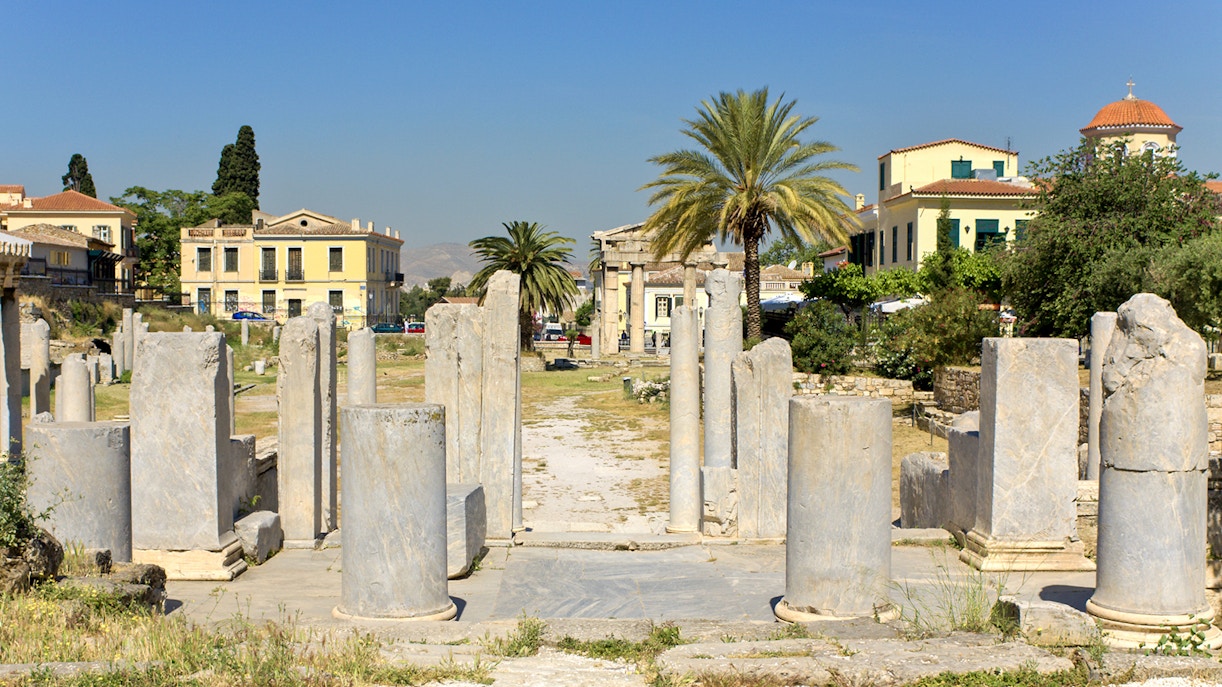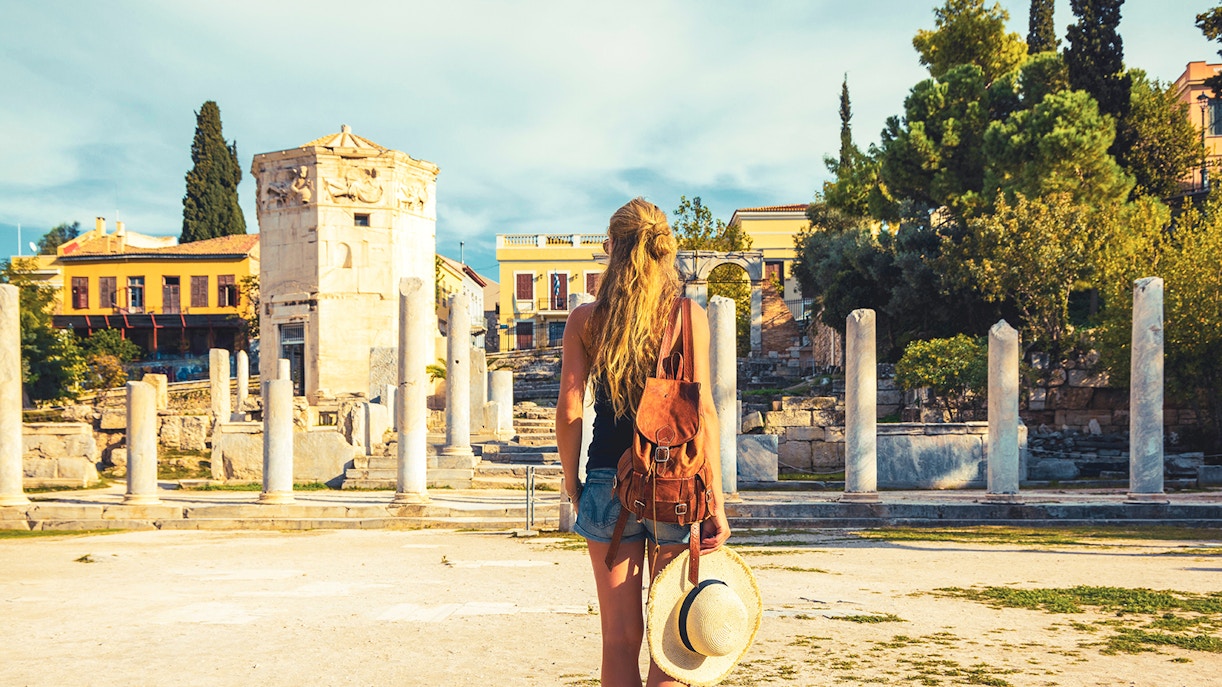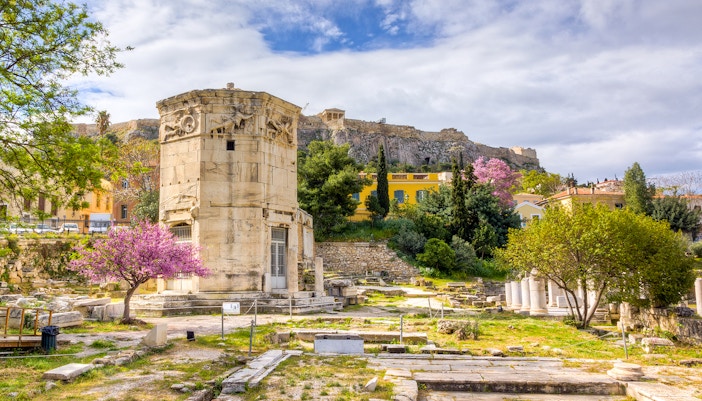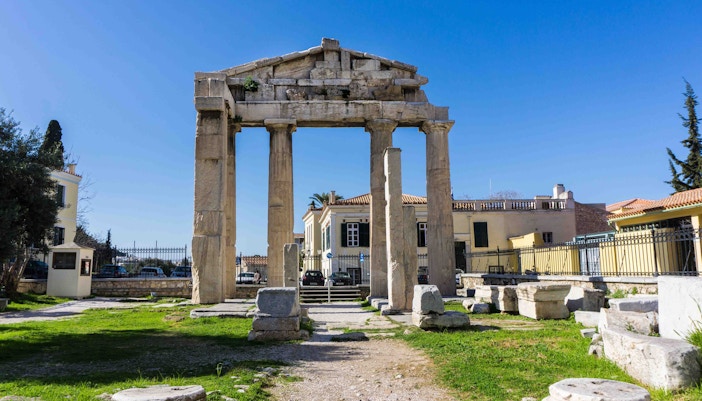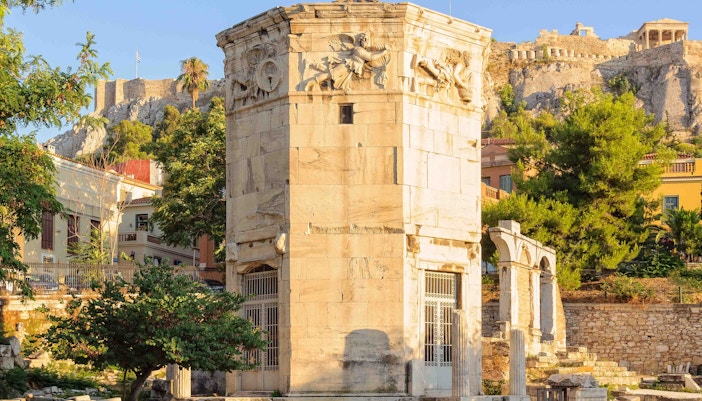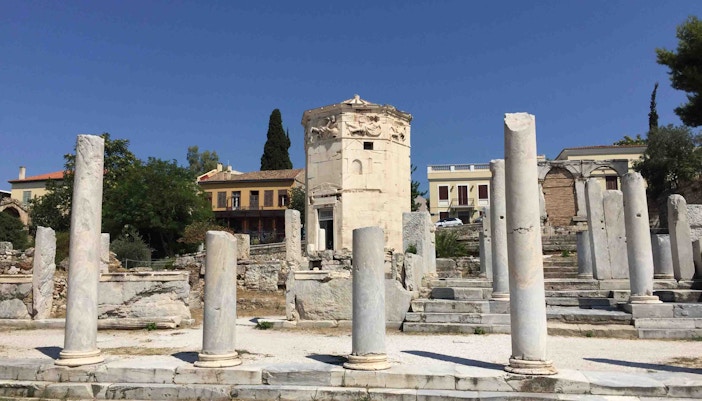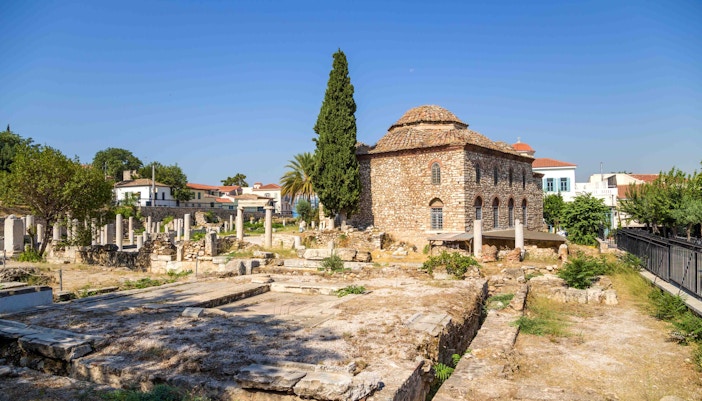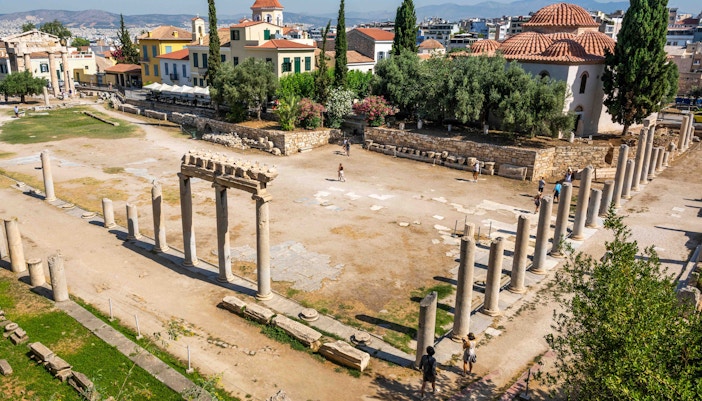Official name: Roman Forum of Athens
Location: In Athens’ Plaka neighbourhood; North of the Acropolis Hill and east of the Ancient Agora of Athens
Date of construction: Between 19 BC and 11 BC
Built by: The construction of the Roman Agora was funded by Julius Caesar and Roman emperor Augustus.
Function: Roman marketplace and civic center
